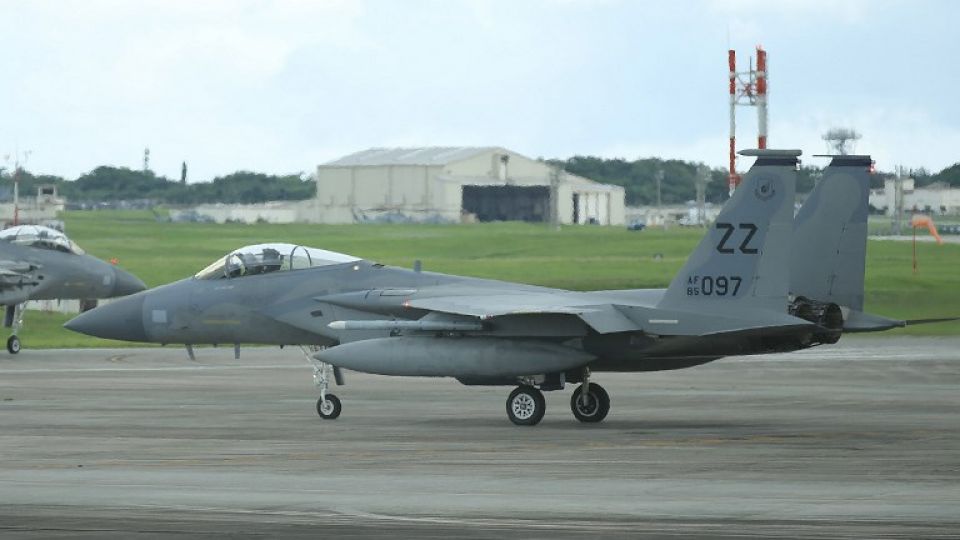October 2, 2018
The debate over US bases in Okinawa is likely to intensify after the election of a new governor.
The confrontation between the central and Okinawa prefectural governments will likely be prolonged with Denny Tamaki, an opponent of the central government’s plan to relocate a U.S. military base within the prefecture, winning the Okinawa gubernatorial election on Sunday. The prospect of the relocation plan is increasingly unclear.
“I pledge to take over the foundation established by former Okinawa Gov. Takeshi Onaga,” Tamaki said Sunday night in Naha, while performing the Okinawa kachashi dance with his supporters to celebrate.
During the election campaign, Tamaki relied on Onaga’s popularity. Tamaki decided that the unity of the All Okinawa group, which consists of conservatives and reformists and had supported Onaga to become governor, was weak. In the latter stage of the campaign he therefore began appealing to voters that he was the successor to Onaga, who had died suddenly.
Onaga’s wife Mikiko and second eldest son Takeharu, a member of the Naha Municipal Assembly, joined Tamaki’s rally and made speeches for him.
Tamaki himself told reporters about his true feelings, saying, “I receive much bigger applause when I say, ‘I will carry on the will of the former governor’ than when talking about my policy pledges.”
At the end of August, the Okinawa prefectural government revoked a permit for land reclamation in the Henoko district to respect Onaga’s will. During the campaign, Tamaki clearly said he would support this decision.
Tamaki is likely to fully use the authority of the prefectural governor to resist the central government. For example, he will not give special collection permission that is necessary for the transfer of coral reefs in the Henoko district or approve construction design changes, among other measures.
While the current central government’s plan aims to complete the relocation of the U.S. Marine Corps’ Futenma Air Station in Ginowan to the Henoko district of Nago, both in Okinawa Prefecture, by 2022 at the earliest, it is already two or three years behind schedule, according to a senior Defense Ministry official. It is possible the plan will be further delayed under the new governor.
Resumption of construction
The central government has suspended the relocation work since the revocation of the landfill permit. However, it plans to push forward with the relocation, irrespective of the election result.
To resume the relocation work, the central government will shortly file a lawsuit demanding the nullification of the prefecture’s revocation. At the same time, in order to invalidate the revocation until a ruling is given, the central government will apply to the court for a stay of execution.
Within the central government, many believe that it will be possible to obtain a stay of execution in several weeks or about a month, while some officials within the Okinawa prefectural government say, they will not be able to win such a lawsuit if it is filed.
Onaga, who pledged to stop the relocation and became Okinawa governor in 2014, intensified the confrontation with the central government by revoking the landfill permit given by former Gov. Hirokazu Nakaima, among other actions. There have been a total of five lawsuits contested between the central and Okinawa prefectural governments on the matter. In December 2016, the Supreme Court ruled that it was illegal for Onaga to revoke the landfill permit issued by Nakaima, rejecting Onaga’s assertion.
Difficult management
Like Onaga, Tamaki has not presented an alternative plan for a relocation destination for Futenma air base. He plans to resolve the issue through negotiations with the United States. However, given the Japanese and U.S. governments agreed that relocating the base to the Henoko district was the only solution, such negotiations will likely face difficulties.
If the prefecture considers a plan to relocate the Futenma air base outside the prefecture, it is highly likely to be deadlocked. The Cabinet of former Prime Minister Yukio Hatoyama, who led the now-defunct Democratic Party of Japan, caused confusion by pledging to at least relocate the base to outside the prefecture. In the end, it failed to find a relocation destination outside the prefecture and returned to the original plan of relocating it to the Henoko district.
While the central government provides Okinawa Prefecture with lump-sum grants, which the prefecture can decide how to use, the amount was cut for four years under the leadership of Onaga. The central government plans to allocate ¥300 billion-level grants every year for the development and promotion of Okinawa Prefecture by fiscal 2021, while the period of the central government’s commitment to providing these grants will end during Tamaki’s term of office. Tamaki will likely face difficulties managing the prefectural government in terms of finance.


